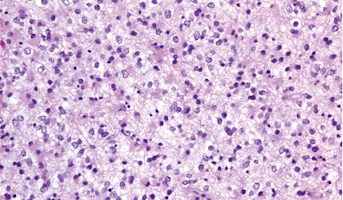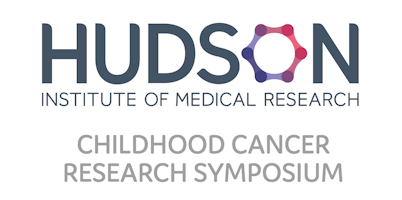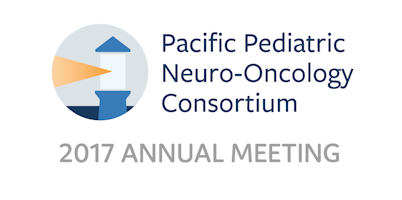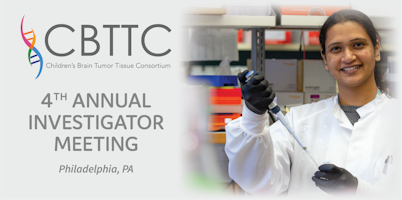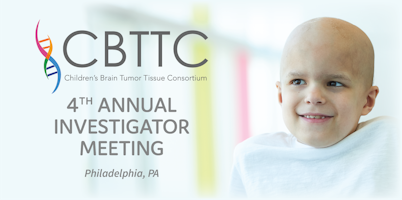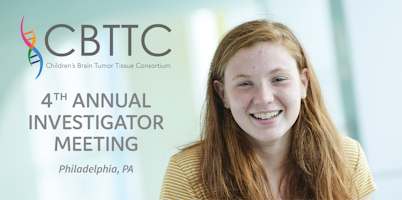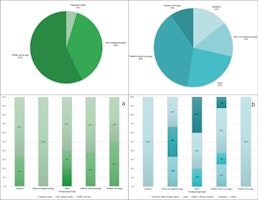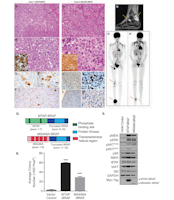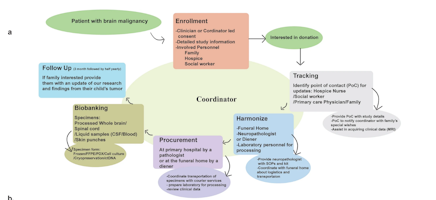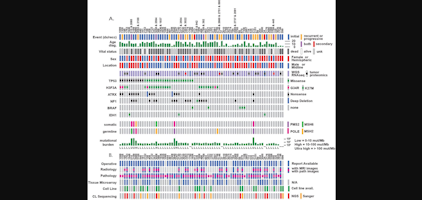Angela Waanders
Chicago, IL 60611, USA
Ann & Robert H. Lurie Children’s Hospital of Chicago

About
Director, Precision Medicine Oncology; Program Director, Pediatric Neuro-Oncology Fellowship; Executive Board Chair, Children's Brain Tumor Network
Ann & Robert H. Lurie Children’s Hospital of Chicago
Specialties:
Education: Tulane University School of Medicine, 2003
Postgraduate Training: Fellowship in pediatric hematology/oncology, Children's Hospital of Philadelphia, 2006-2009; Residency is pediatrics, Children's Hospital of Philadelphia, 2003-2006
Board Certifications: Pediatrics, Pediatric Hematology-Oncology
See Northwestern University Faculty Profile >
Sievert AJ, Jackson EM, Gai X, Hakonarson H, Judkins AR, Resnick AC, Sutton LN, Storm PB, Shaikh TH, Biegel JA. Duplication of 7q34 in pediatric low-grade astrocytomas detected by high-density single –nucleotide polymoprhism-based genotype arrays results in a novel BRAF fusion gene. Brain Pathology 2009 Jul; 19 (3):449-58. Epub 2008 Oct 21. PMID: 19016743
Jackson EM, Sievert AJ, Gai X, Hakonarson H, Judkins AR, Tooke L, Perin JC, Xie H, Shaikh TH, Biegel JA. Genomic Analysis Using High-Density Single Nucleotide Polymorphism-Based Oligonucleotide Arrays and Multiplex Ligation-Dependent Probe Amplification Provides a Comprehensive Analysis of INI1/SMARCB1 in Malignant Rhabdoid Tumors. Clinical Cancer Research March 15, 2009; 15 (6):1923.1930. Epub 2009 Mar 10. PMID: 19276269
Dougherty MJ, Santi M, Brose MS, Ma C, Resnick AC, Sievert AJ, Storm PB, Biegel JA. Activating mutations in BRAF characterize a spectrum of low-grade gliomas. Neuro Oncology 2010 Jul; 12 (7): 621-30. Epub 2010 Feb 14. PMID: 20156809
Stephens, J, Sievert AJ, Judkins AR, Resnick AC, Storm PB, Rushing E, Santi M. Spinal cord ependymomas and myxopapillary ependymomas in the first two decades of life: a clinicopathological and immunohistochemical characterization of 19 cases. J of Neurosurg Pediatr. 2012 Jun; 9 (6):646-53. PMID: 22656257
Sievert AJ, Lang SS, Boucher KL, Madsen PJ, Slaunwhite E, Choudhari N, Kellet M, Storm PB, and Resnick AC. Paradoxical activation and RAF inhibitor resistance of BRAF protein kinase fusions characterizing pediatric astrocytomas. PNAS 2013 April; 110 (15): 5957-5962. Epub 2013 Mar 26. PMID: 23533272

Ann & Robert H. Lurie Children’s Hospital of Chicago
scientific
Projects

Specimen
Completed
Neurocytoma WGS and RNAseq
The effective treatment of brain tumors requires a robust understanding of their biology. Using rare, high quality neurocytoma samples provided by the Children’s Brain Tumor Network, researchers seek to develop new treatments for this disease.

Adam Resnick
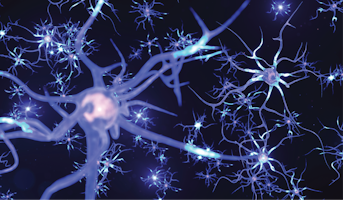
Data
Ongoing
Characterizing the Prevalence of ETMR by Molecular Signature
Embryonal tumors with multilayer rosettes (ETMR) have recently been reclassified and clinical investigations are needed to understand their occurrence and prevalence. ETMR specimens from the Pediatric Brain Tumor Atlas will be used by researchers to begin building a robust understanding and characterization of the tumor.

Derek Hanson

Data
Ongoing
Health Disparities of Pediatric Brain Tumors
Data points to disparities of cancer diagnosis and outcomes across children in different racial and ethnic groups. In an effort to better understand these disparities, researchers will interrogate data provided by the Pediatric Brain Tumor Atlas.
Medulloblastoma, HGG, Ependymoma

Xiao-Nan Li

Specimen
Completed
Whole Genome Sequencing and RNA Sequencing of the CBTN Bank for the Pediatric Brain Tumor Atlas
Research into adult cancer has benefited greatly from large scale genomic research. Until now due to the limited resources and availability pediatric brain tumors have not been part of large-scale genomic generation efforts. The CBTN aims to create a comprehensive genomic atlas for use by researchers worldwide to unlock how brain tumors develop, grow, survive, and how they can be treated and cured.
Craniopharyngioma, Medulloblastoma, HGG, (AT/RT), LGG, Ependymoma, Ganglioglioma, DNET, Choroid Plexus Tumors, Meningioma, DIPG, Oligodendroglioma, Schwannoma, Germinoma, Choroid Plexus Tumors, Subependymal Giant cell Astrocytoma, NGGCTs

Adam Resnick

Specimen
Completed
Target Identification and Modeling of NF1-associated Low-grade Glioma
Low grade gliomas are often associated with the genetic disorder neurofibromatosis type 1 and research is needed to develop targeted therapies for such tumors. The Children’s Brain Tumor Network is providing researchers with rare samples necessary to accelerate progress in the treatment of NF1-LGGs.
LGG

Michael J. Fisher

Data
Ongoing
Cancer Predisposition in Pediatric Brain Tumors
Studies have shown that many patients with germline mutations, mutations that can be passed down, have a predisposition to central nervous system tumors. Researchers will use data from the Pediatric Brain Tumor Atlas along with patient’s clinical data and family history to study the impacts of predisposition on patient outcomes.
All Brain Tumor Types

Suzanne P. MacFarland
Support
Planning
Diversity, Equity, and Inclusion: Translation of Informed Consent Forms
In November 2020, the FDA released guidance to help promote clinical trial enrollment practices that could lead to clinical trials that better reflect diverse populations who may benefit from treatments, medical devices, or drugs that are being investigated. Despite previous efforts, there remain gaps in inclusion of under-represented populations in many clinical trials. One of the barriers to being inclusive among all groups are the languages that are offered for informed consent practices. Currently, the Children’s Hospital of Philadelphia and collaborating institutions typically offer multilingual staff and informed consents in limited languages. But, the options available at each site vary and can be costly and burdensome at the level of each individual institution/clinical research team. Our goal is to remove this potential barrier by providing consortium level informed consents and study documents in multiple languages to ensure enrollment and recruitment of under-represented minorities (URM) in languages understood by a diverse population of patients and families. By providing these necessary resources, non-English speaking patients and families will be afforded the same opportunity to understand and participate in clinical trial enrollments as English-speaking patients and families.
All Brain Tumor Types

Cassie Kline

Specimen
Ongoing
Molecular Characterization of Pediatric Brain Tumor Subjects and Trios within the Pediatric Brain Tumor Atlas
We have not yet discovered why the vast majority of children develop brain cancer. Utilizing CBTN data and Kids First data resources, researchers at CBTN are working to answer questions about the cause of pediatric brain tumors.
All Brain Tumor Types

Data
Ongoing
Descriptive "Pharmacogenomics Analysis" of the CBTN PBTA Cohort
Many pediatric brain cancer patients experience toxicities related to the use of vincristine in treatment protocols. Using the Pediatric Brain Tumor Atlas, this study will help to define the frequency of genetic risks for side effects in an effort to lessen the need for treatment reductions.
All Brain Tumor Types

Angela Waanders
related
Presentations
Childhood Cancer Research Symposium
The Children’s Brain Tumour Tissue Consortium (CBTTC): The CBTTC vision and goals with a focus on the autopsy program
Angela Waanders
Pacific Neuro-Oncology Consortium (PNOC)
Pacific Neuro-Oncology Consortium (PNOC)
Angela Waanders and Adam Resnick
CBTN Annual Investigator Meeting
Targeting Alternative Lengthening of Telomeres (ALT) in Pediatric CNS Malignancies
Download Publication
Angela Waanders
CBTN Annual Investigator Meeting
Post-Mortem BioBanking Initiative
Download Publication
Angela J. Waanders
CBTN Annual Investigator Meeting
Solutions to Clinical Data Visualization and Analysis
Download Publication
Angela J. Waanders
